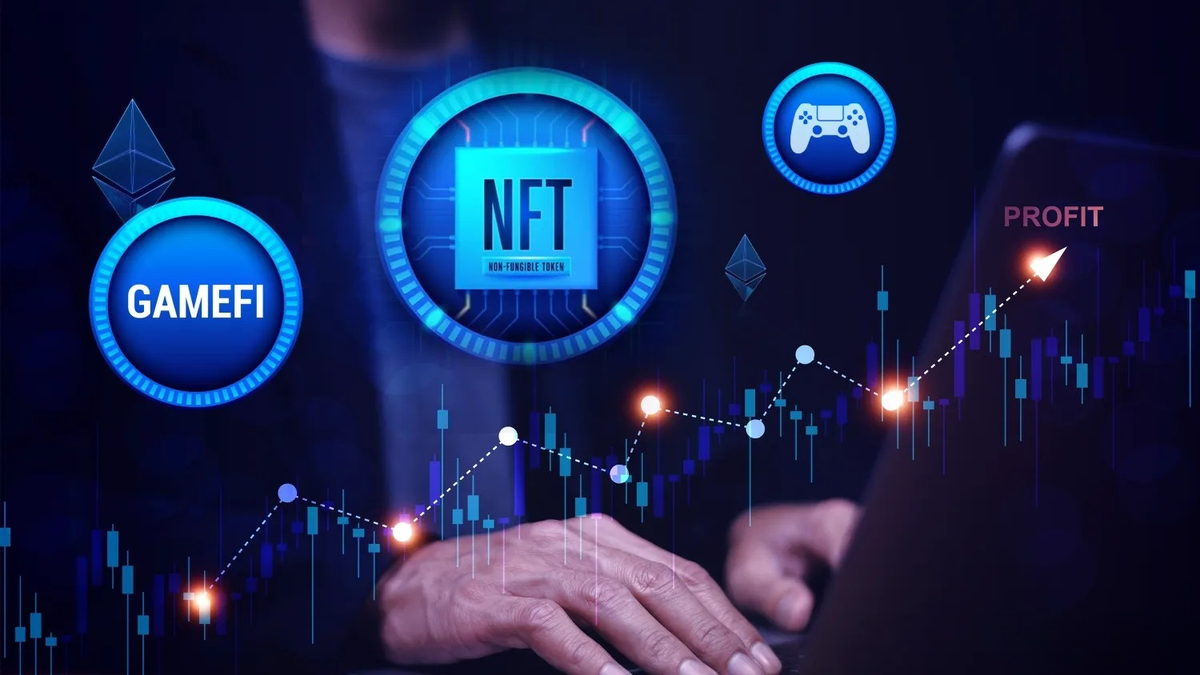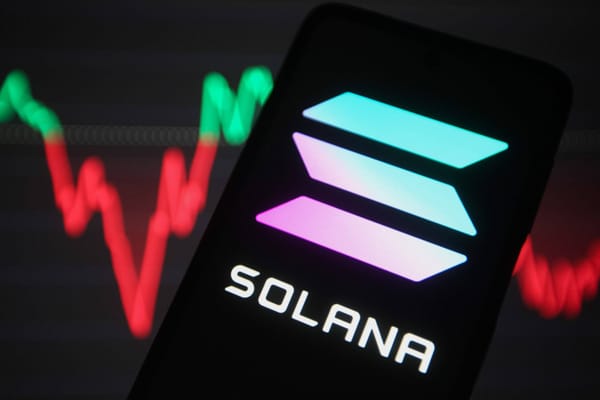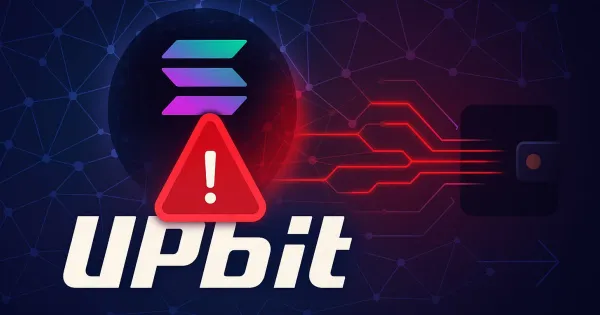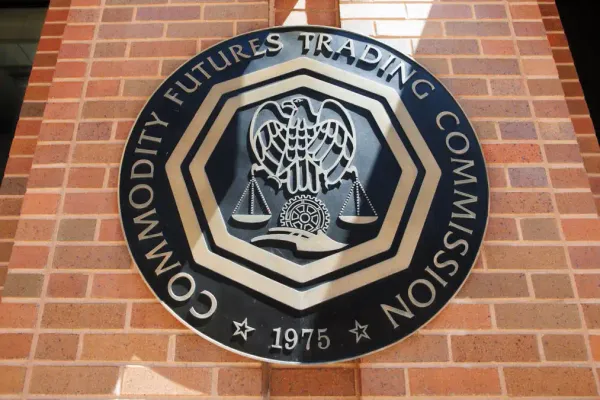GameFi Market Report and Analysis in 2022

While cryptocurrencies have experienced ups and downs over the past decade, GameFi emerged as a new segment only in late 2020, marking the first cycle of the blockchain gaming industry by mid-2022.
This report provides an opportunity to review data and analyze how this field has performed in terms of user behavior, on-chain transactions, fundraising, and price performance. It also discusses some key challenges that the GameFi industry has faced.
Events of 2022 Highlight Fundamental Contradictions
The events of 2022 highlighted fundamental contradictions in combining two industries: Gaming and Finance. Players engage in games for entertainment, while others participate with incentives to earn money. Key data points in this report indicate that projects built on hype and unsustainable play-to-earn models have suffered the most during this downturn.
GameFi Paradigm: Exploring Aspects of GameFi
The report delves into the performance of each chain within the gaming ecosystem. GameFi operated during the downturn in 2022, with most protocols experiencing significant declines in both price and users.

The critical question remains: how can developers enable players to both play and earn money rather than toil and yield? How can GameFi titles be built for sustainability?
While investor data shows optimism towards GameFi—GameFi and metaverse projects have seen significant VC funding compared to other categories in the blockchain industry—no smart contract platform has managed to fully harness and become the "GameFi chain."
In the final section of this report, there will be proposals that could achieve reasonable expectations in the GameFi industry and suggest some games to watch in H2 2022.
Overall Market Performance of GameFi
Since the beginning of 2022, the entire market has trended downwards amidst harsh macroeconomic conditions and increasing inflation. The decline in the stock market, represented widely by the S&P 500 index, pulled BTC—now attracting billions in institutional funding—along and dragged the altcoin market with it.
Figure 1: BTC & S&P 500 Price Correlation Analysis

The Fear & Greed Index reached an extreme fear state, and active GameFi users, measured by unique wallet addresses interacting with smart contracts over a specific period, gradually declined. Despite the Fear & Greed Index recovering from around 10 (Extreme Fear) in late June to 42 (Fear) now, the cryptocurrency market has yet to strongly respond to price actions.
Figure 2: BTC Price ($) vs. Fear and Greed Index

Figure 3: GameFi Market Cap vs. BTC Market Cap


In terms of volume, Ronin, BNB (formerly BSC), and Harmony outperformed all other chains by a wide margin. In the case of BNB, low transaction fees and ease of building have propelled numerous projects. However, Ronin and Harmony, particularly reliant on their flagship games within their ecosystems—Axie Infinity and DeFi Kingdoms—are driving volume.
In transactions (Txn) and average users in H1 2022, chains focused on WAX and Hive remain the top two.
Gaming Transactions by Chain
Market Share of Gamers
3 Lessons Learned

- "Hype" in price surges is not a reliable indicator of sustainability or future success.

- Axie Infinity, the first cryptocurrency game to become a household name, or STEPN, the move-to-earn application, have come and gone.


Meanwhile, Alien Worlds and Splinterlands, two lesser-known games outside the GameFi space, are currently dominant. Even after the price drop, users continue to enjoy them, despite lower ROI. This could be due to the end of the season on June 1, a revised ranking reward system, cryptocurrency market downturn, or a combination of factors. Although not the only exciting games, they have avoided asset inflation that has caused other games to boom and bust.
GameFi chains have yet to emerge and assert themselves. It is still too early to predict the market-leading games.

WAX and Hive, the two largest GameFi chains by transaction volume, remain heavily dependent on the success of their users in Alien Worlds and Splinterlands, respectively, accounting for 54.55% and 99.85% of their total players.
However, both WAX and Hive are not purpose-built like Axie Infinity's Ronin.
BNB is the third-largest chain in terms of gaming transactions and gamers but lacks any dominant titles in its ecosystem. However, its potential remains untapped.
Another highly anticipated game, Illuvium, will launch on Ethereum, and Big Time, another upcoming game with substantial funding, is expanding to Ethereum. STEPN also expanded to Ethereum.

Developers are increasingly developing towards multichain ecosystems.
Top DeFi Kingdoms and STEPN games expanded to 2 chains in March 2022 to attract users and diversify risk but faced tokenomics issues. StepN initially ran on Solana. When it expanded to the BNB chain, the price differential for GST on the BNB chain increased to the highest level of 9 compared to GST on Solana, mainly due to the lack of cross-chain bridges and BNB chain demand. Although the GST price differential between these two chains has significantly decreased, the latest launch of GST on Ethereum has shown price differences, highlighting the challenges of creating a multi-chain ecosystem.

Animoca Brands said their upcoming AAA game, Phantom Galaxies, will be a multichain experience.
With subnet technology, Avalanche aims to make it easier for games to be built across multiple chains (i.e., their own network based on the AVAX infrastructure). They have attracted Defi Kingdoms and Crabada into subnets but subsequently faced several issues, with many projects leaving Avalanche for the BNB chain.





Chain Analysis
The development of protocols on the chain began to slow significantly in May, with only 47 new projects launched that month. This number started to improve slightly in June with 63 new projects, although still far behind Q1 project levels.
In July, 38 new projects, a slight decrease.
BNB and Ethereum remain the richest chains in the gaming ecosystem, with over 582 and 538 projects on each respective chain.
BNB Chain leads as the chain with the most new gaming projects per month, with fewer new games since the bear market began in May. Most other chains have maintained a relatively stable supplementary amount, with Polygon showing the most growth, followed by WAX. Despite many chains, it can still be seen that game developers prefer Polygon, WAX, and BNB, games that are more fee-friendly.
For the number of active users in the 5 chain ecosystems, WAX expanded to 370,000 by the end of July, but Hive experienced a significant decline in early June from 360,000 to 140,000 due to a sharp drop in active users on Splinterlands.

Based on the market share of each project on the chain, BNB has a relatively strong and diverse ecosystem. This is supported by the fact that game volume for top competing games on BNB does not exceed 25% of the total volume. This is a more balanced setup compared to Ronin or Harmony, where the main projects hold 100% and 99.8% of the total volume. Given the high volatility of GameFi, even leading games can fall into a death spiral, so diversification may help the ecosystem recover better during the market downturn.


Figure: Gaming Volume by Chain
Active Projects by Chain
GameFi Investment Deals
This year, VCs have begun to focus more on investing in Web3, especially GameFi and Metaverse, as seen in the changes below. Specifically, GameFi and Metaverse have a much larger market share in the initial investment pie compared to Tooling, Trading, and Lending/Borrowing. VC investment in these two types has increased from $874 million in 2021 to $2.4 billion in 2022.
Figure: 2021 Number of Investment Market Share by Category
Figure: 2022 Number of Investment Market Share by Category
In terms of funded transactions, Epic Games received the most with a $2 billion investment from Sony Group Corporation and KIRKBI in April 2022. In terms of the number of projects, Animoca Brands leads with 52 investment projects in a year including GameFi, metaverse, and guild.
Top Invested Projects
Number of GameFi Projects by Investor

Investments in GameFi and Metaverse are still concentrated in the Seed round, accounting for 48% of total transactions, indicating that the market is still in its early development stage.
GameFi Fundraising Round

Metaverse Fundraising Round

Notable NFT Games in 2022
Are some high-profile and highly anticipated games really promising as rumored?
The story in GameFi is that current games lack quality and sustainability. However, once AAA games are launched, they will bring GameFi to everyone after the bear market ends, while addressing most of the current issues.
They are expected to launch in 2022 and 2023. Notable projects include:
- Illuvium

- Phantom Galaxies
- Big Time
Illuvium itself has yet to be released, but it has attracted considerable interest as it promises to be the first major AAA game with a star-studded team of game and blockchain developers behind it.
Interest over time in Illuvium, GameFi, and Game Blockchain

Phantom Galaxies, a collaborative project between Animoca Brands and Blowfish Studios, brings a taste of what the future of blockchain game development might look like—a collaboration between studios proven in traditional and blockchain gaming, with massive resources to successfully launch projects.
Big Time is being developed by Big Time Studios, founded by Decentraland co-founder Ari Meilich. It promises players a true AAA RPG experience, coupled with easier participation with its
upcoming launch on PlayStation and Xbox, in parallel with its release on blockchain.
While these games present a glimpse into what might be the future of blockchain gaming, they also face challenges and skepticism. The game has now seen a sudden jump in participation, as more big game developers are building AAA games on this chain.
Conclusion
The GameFi market is still in its infancy, but despite significant growth in the first half of 2022, the sector has faced significant headwinds in the second half of the year. The coming years will be critical in determining whether GameFi can establish itself as a sustainable industry or if it will remain a niche sector.



